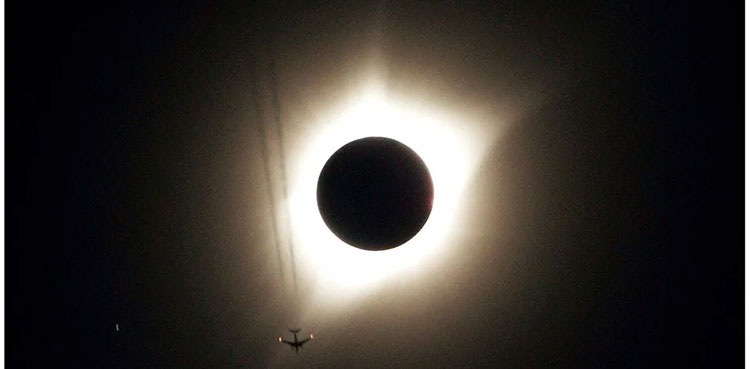
Electric grids across the US are anticipating a rapid decline in solar generation during Monday’s total solar eclipse, which will span multiple states.
Total solar eclipse 2024: WATCH LIVE HERE
NASA estimates the path of totality – when the sun is fully blocked by the moon – will last from 1:30 pm CDT (1830 GMT) to 2:35 pm CDT in the U.S.
Here’s how the eclipse will affect grid operators across the country:
ERCOT (TEXAS)
The eclipse is forecast to pass Texas from 12:10 p.m. to 3:10 p.m. CDT and cause solar power generation to dip to roughly 8% of it maximum output at its peak, the Electric Reliability Council of Texas said.
ERCOT expects solar generation to drop from more than 10,000 MW to about 1300 MW over two hours, when demand will hover between 48,899 MW and 51,539 MW. Solar can account for 15% to over 20% of ERCOT’s total electricity.
ERCOT does not expect to face any grid reliability issues, but said it has analyzed challenges with ramping – essentially, the process of increasing or decreasing electricity generation to match demand — posed by the eclipse.
If it does detect reliability issues, it may decide to commit additional resources or turn to ancillary services in real time, an ERCOT spokesperson said.
Ancillary services are additional resources purchased by ERCOT a day before to balance the next day’s supply and demand.
MISO (PARTS OF MIDWEST, SOUTH AND WEST)
The Midcontinent Independent System Operator, which operates the grid in all or part of 15 states in the West, Midwest and the South, would normally see 5,500 MW of solar capacity on a sunny day.
The eclipse could shrink that by 4,000 MW over 90 minutes, followed by a 3,000 MW rebound, it said. However, the grid operator doesn’t anticipate reliability issues as a result.
“Solar generation will rapidly decrease then increase, resulting in a need for ramp and may cause congestion management challenges,” MISO said in an operations report.
MISO plans to increase reserve requirements and will also line up extra generation that can come online quickly if needed, it said.
ISO NEW ENGLAND
ISO New England, which spans six New England states, said the eclipse’s path of totality includes northern areas in its footprint. On a clear day, approximately 6,000 MW of solar power may go offline during the eclipse, it said.
Assuming a clear, sunny day, “this could represent a 92% loss of overall solar generation,” the grid operator added.
Solar will be replaced by other power resources that can come online quickly such as batteries, pumped storage, or natural gas to meet demand.
NYISO (NEW YORK)
Assuming clear skies Monday, the New York Independent System Operator expects to generate 3,500 MW of solar production as the eclipse begins, which will drop to 300 MW over an hour and then rise to about 2,000 MW after it ends.
“The loss of nearly 3,000 MW of generation is significant, even when it can be anticipated, and requires additional resources to be available for the system to account for the loss,” the NYISO said.
PJM (PARTS OF NORTHEAST, MIDWEST AND SOUTH)
PJM, which covers all or part of 13 states in the Midwest, Northeast and South plus Washington, D.C., expects a temporary reduction of at least 85% to 100% of production from its solar fleet. It is preparing for a reduction of 4,800 MW of grid-connected solar that would have been otherwise available, it said on Thursday.
PJM is preparing for the eclipse by deferring planned maintenance and keeping hydropower resources on standby, it said in a statement.
CAISO (CALIFORNIA)
California is farther away from the eclipse’s central path of totality. Grid-scale solar generation there is expected to drop by 6,349 MW to 7,123 MW in nearly one and a half hours.
The California Independent System Operator plans to meet this challenge by ensuring sufficient natural gas and hydropower resources are available and by potentially restricting routine maintenance.
source https://arynews.tv/solar-eclipse-2024-us-grid-operators/

0 Comments